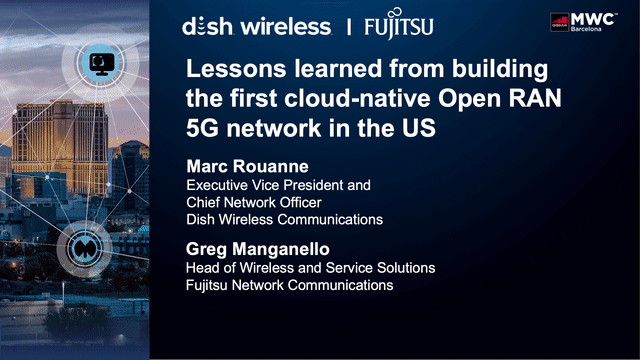
The pace of communications is accelerating. As insatiable demands for data, connectivity and innovative use cases push the limits of telecom infrastructure, we are seeing increased demand for unprecedented network transformation.
An integral aspect of this evolution is the transition to open networking. With an open ecosystem, network operators no longer have to rely exclusively on a small set of specific vendors with proprietary interfaces. Industry-defined, documented standardized interfaces allow customers to pick from best-in-breed vendors. Amazingly, customers can continuously make B-I-B selections throughout the lifecycle, not just at RFP time. Essentially, open networking brings the benefits of Kaizen, continuous improvement, to the 5G world.
Some companies fear increased competition wrongly thinking that somehow keeping out progress can somehow keep lightning in the proverbial bottle. But the better informed companies realize that competing for the future gives our customers the best efficiencies, value for money, not to mention good old fashioned hustle. Customers can expand their buying criteria to include this competition for the future element since greater choice and supply chain diversity provides greater robustness.
Open RAN, in particular, is seeing accelerating adoption with collaborations, trials and deployments taking place worldwide. By embracing the Open RAN ecosystem, operators are harnessing the power and speed of innovation to accelerate new feature rollouts much faster than possible with traditional closed networks while also reducing operational expenditures. Open RAN also introduces an important new RAN network functionality: RAN Intelligent Control (RIC). By opening the RIC to third-party developers, operators can introduce innovations more quickly without having to wait for an incumbent vendor to deliver a completely new system release.
With the robust Open RAN ecosystem, operators can choose with the confidence that comes with standardization and a strong support system of industry groups that are working towards making Open RAN a success: the O-RAN Alliance with over 30 operator members worldwide, Telecom Infra Project (TIP), and the Open RAN Policy Coalition with over 60 member companies worldwide.
Open RAN Reality
In Asia, many Tier One service providers have already deployed Open RAN systems. Most of these deployments are commercial brownfield deployments, proving that 5G Open RAN can interoperate with existing networks. Likewise, several providers in Europe have already begun delivering services on Open RAN networks. And in North America, DISH is launching the first greenfield, 5G Open RAN, cloud-native network, which we are gratified to be supporting with Fujitsu technology, systems integration, and multi-vendor testing services.
Despite the progress, however, we are seeing some challenges to Open RAN advancement. For example, there are misconceptions around integration with some service providers concerned about interoperability and accountability when integrating multiple vendor components into the RAN. While it is true that integrating systems from multiple vendors is not always trivial, system integration in an Open RAN environment is guided by globally defined standards. Therefore, with methodical processes proven in other open networking initiatives, it works. The systems integration knowledge base for those participating in multi-vendor solutions is rapidly growing and new learnings are on a torrid pace that has been the hallmark of every telecom technology disruption.
Similarly, there are misunderstandings and sometimes misstatements about security in open networks. To be clear, open networking does not mean open security. In fact, the O-RAN Alliance Security Focus Group is committed to ensuring that open interfaces defined by the O-RAN Alliance actually provide increased independent visibility and the opportunity for enhanced security. Cybersecurity best practices are just as important in Open RAN as they are in any modern network and 5G Open RAN has as good or even better security than other competing solutions.
Transition to Tomorrow
As a leading member of the O-RAN Alliance, founding member of the Open RAN Policy Coalition, and steadfast contributor to open networking initiatives, Fujitsu believes in the power of collaboration to accelerate Open RAN deployments. We are firmly committed to ongoing advancements in open networking to support our customers and ecosystem partners with trusted Open RAN solutions.
At Mobile World Congress in Barcelona last month, I was honored to share the stage with Marc Rouanne, Chief Network Officer of DISH, to relay firsthand experiences in building the first cloud-native, Open RAN 5G broadband network in North America. As one of DISH’s key ecosystem partners, Fujitsu is supporting the DISH deployment with O-RAN-compliant low-band and mid-band 5G radios, along with 5G systems integration and network operational readiness services. To get a real-world perspective on the architectural and operational advantages of Open RAN, the benefits that service providers like DISH are already realizing, and a few best practice tips for multi-vendor collaboration, click here to view our session from MWC:
